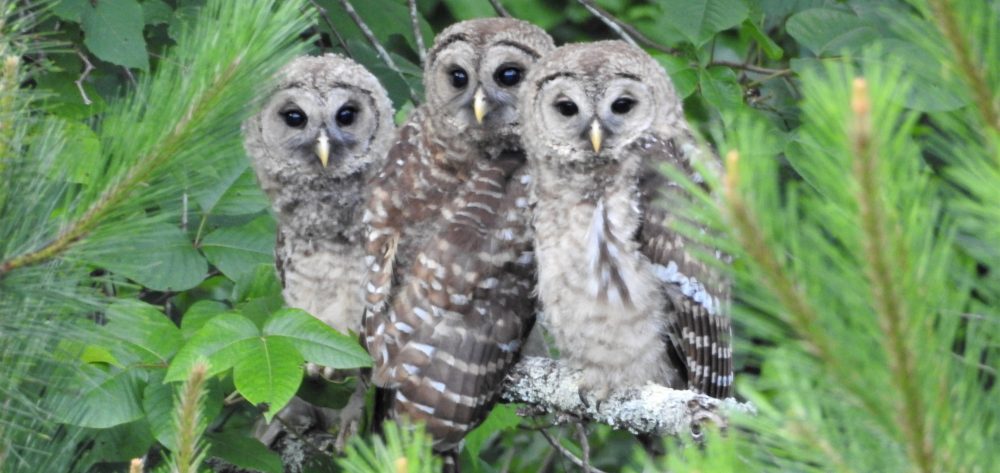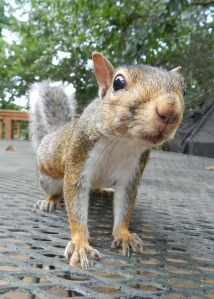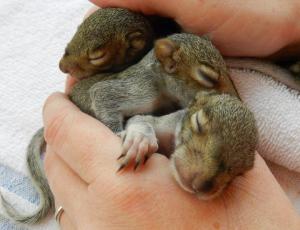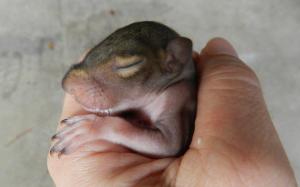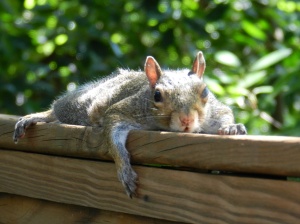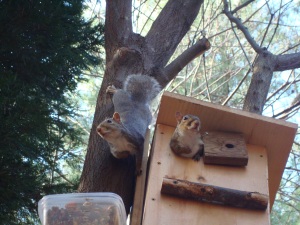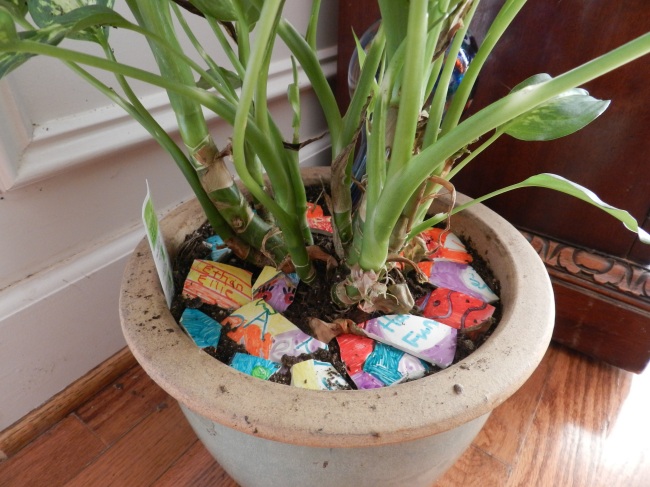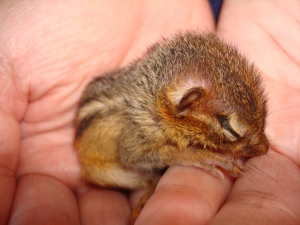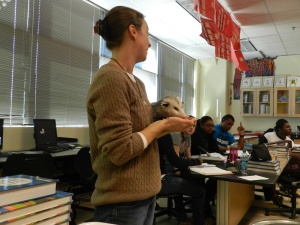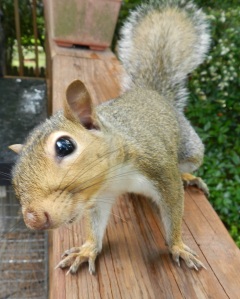Squirrels tend to drive some people nuts, but I’m nutty about them. Excuse the bad pun, but as a wildlife rehabilitator, I often get teased by friends who complain about these “furry rodents” that raid bird feeders and gardens and occasionally cause even more trouble for homeowners. I paid very little attention to squirrels myself until I started volunteering (at AWARE Wildlife Center) to help care for animals who have been injured or orphaned. Highly adapted to human environments, squirrels often get in harm’s way. Perhaps the saddest cases are animals who have been kidnapped and kept for a while (because they would make “cute pets”) and are later surrendered to us when the animal develops health problems or becomes too much to handle. Sometimes, a whole nest of squirrels arrives after their home is destroyed by tree pruning, while other times people bring us youngsters that have fallen from the nest and gotten left behind or have been caught by a pet. (Cat bites, especially, can be fatal to wildlife). Once in a while, we get a squirrel that has been dropped by a hawk, and one time a squirrel actually was brought in with its attacker after the squirrel’s “posse” attacked the hawk on the ground). Whenever possible, we advise people to attempt to re-nest babies — if not in the original nest, then in a homemade nest placed as close to the original nest as possible. You might be surprised to learn that baby squirrels can squall quite loudly when they are hurt or need attention, so their mother will find them. When the re-nesting fails, the squirrels usually end up in our care.
Raising a baby squirrel is pretty involved. Like all baby mammals, squirrels have special nutrition requirements, and they need to be bottle-fed in a way that prevents them from aspirating (taking fluid into their lungs). When they are very young, they require feedings every 2-4 hours throughout the day, much like a human baby! After feedings, they must be stimulated to go to the bathroom, which their mother would do in the wild by licking them (and we do with a warm, wet Q-tip!). Because infant mammals can’t thermo-regulate, they also need to be kept warm until they are fully furred. I’ll spare you too many details, but needless to say, the task of rehabilitating any mammal requires commitment, patience, and a willingness to do unpleasant, dirty jobs. The hardest part of raising any animal, though, is not letting oneself get too attached. In order to live the best life, wild animals need to stay wild.
Having raised tiny, furless squirrels until the time of their release, I have a different perspective on these animals than most people. It’s hard not to feel genuine compassion for a small, helpless creature fighting for life, and as you begin to care for individual animals, you begin to care for the species as a whole. Curious and intelligent, squirrels constantly amuse and delight me with their antics and cute expressions. They’re remarkable acrobats, too! Sleepy, snuggly, and tame during their first months of life, they soon become the busy, chattering, frenetic animals we see out our window, playing their vital part in the ecosystem by spreading seeds and providing food for other animals. If we pay attention, though, we may catch one stretched out in repose on a warm summer’s day or one tightly balled up in its tail against the winter’s chill.
Watching squirrels I have raised from infancy step out into the big, wild world a few months later to live out their lives is always thrilling and joyful. Some of “my” babies remember me and continue to visit my porch from time to time. If I have treats to offer, they’ll come right up to say hello, but if no nuts are forthcoming, they continue on their way caring nothing for me, as it should be. I’m glad just to see them scrambling through the trees, eating my acorns, and being squirrels. If they steal a tomato and raid my bird feeder from time to time, so be it. These things are small compared to the delight they bring.
